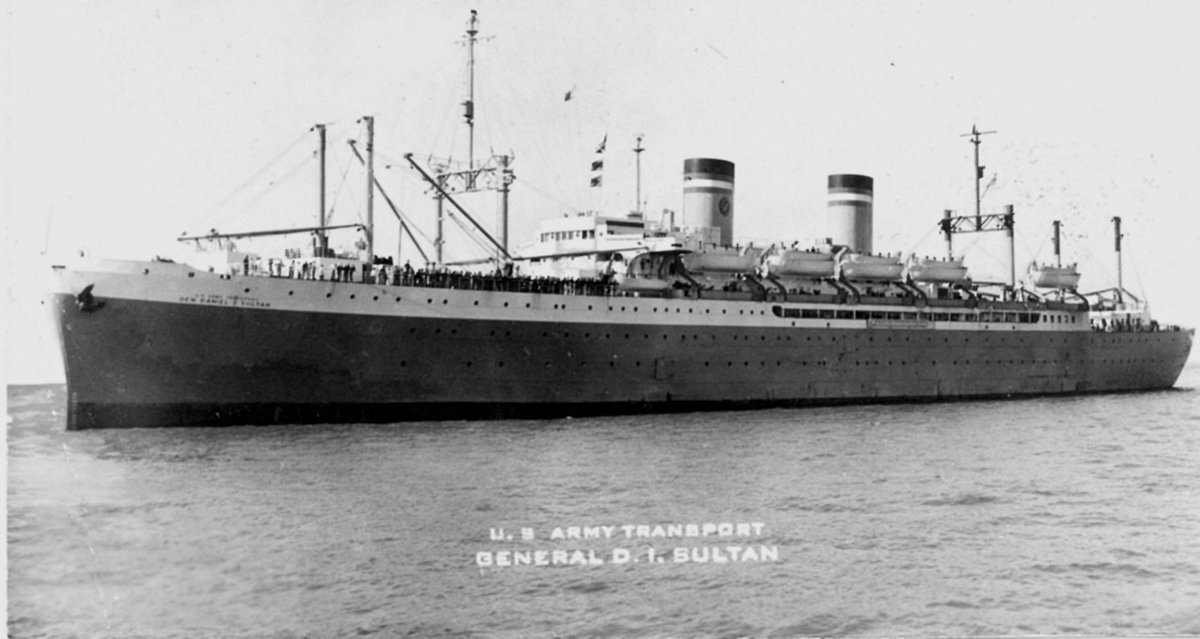Posts Tagged by cj martonchik
“Creating in my head”: How Lillian Schwartz turned Life’s Obstacles into Opportunities

Lillian Schwartz working at her home computer circa 2010. / THF706855
In 1949, Lillian Schwartz — an artist who became well known for her experimental spirit — packed her bags and boarded the U.S. Army transport ship General Daniel I. Sultan. Lillian's husband, Jack Schwartz, was a doctor and military service member. Several months earlier, he took up a new station in a pediatric hospital far from his home in New Jersey — in Fukuoka, Japan. Lillian and her young son now made the lengthy trek to join him there. Ten days of worry about seasickness, dysentery and their safety aboard a military vessel passed as they crossed the Pacific Ocean.

U.S. Army transport ship General Daniel I. Sultan. Lillian sailed on this ship to join her husband, Jack, in Japan in 1949. / THF611239
Continue Reading“An oil painting by Matisse of a humanoid robot playing chess.” “An astronaut riding a horse in photorealistic style.” “An armchair in the shape of an avocado.” These are only a few input suggestions for the image generation platform known as Dall-E 2. In 2021, the company OpenAI launched the first iteration of Dall-E, and it quickly took the internet by storm. The program relies on a combination of machine learning techniques and artificial intelligence — or AI — to produce unique images from natural language text prompts.
But how unique are these images? Programmers, scholars and news anchors alike wrestled with this question in late 2022. The long-term consequences of technologies like Dall-E — including the chatbot ChatGPT — are still evolving. Some people see AI as a helpful aid for professional and personal creativity; others decry it as the end of art-making as we know it.
Like OpenAI's prompts suggest, Dall-E can mimic the style of other artists. Many artists' images, while visible on the internet, do not belong to the public domain. But Dall-E still mines their work to produce its own works. Is this fair practice? Is Dall-E stealing, or is it learning, like an apprentice learns from a master? Is Dall-E itself an artist?
Continue ReadingPaving the Way for Hands-Free Technologies
In 1972, Lillian Schwartz sat down with a bundle of pipe cleaners. She tested their flexibility, twisting them into loose loops and serpentine figures. Lillian was an artist and often used unconventional materials in her work, but these pipe cleaners weren't for arts and crafts. In front of her sat her colleague Max Mathews, who also worked at Bell Laboratories, a technology research facility in Murray Hill, New Jersey. Like Lillian, Max used the extensive computer equipment at the labs for creative endeavors, but he made music instead of art. Today, they were doing something different.
Lillian wrapped the pipe cleaners around Max's shoulders, experimenting with different positions — under his armpits, behind his neck — until she found a configuration that worked. The pipe cleaners sat over his right shoulder, arching from back to front, the front end spiraling up toward his mouth. Lillian would use this pattern to design a prototype hands-free telephone.
Max, like many people, easily tired of sitting in one place and holding a telephone receiver when taking calls. In the days before mobile phones, he couldn't even stand to walk around and burn off steam. Now, Max could easily take notes or pace across his office. Lillian's design not only responded to questions of ease and convenience, it anticipated hands-free technologies we're still experimenting with today.
Continue Reading
